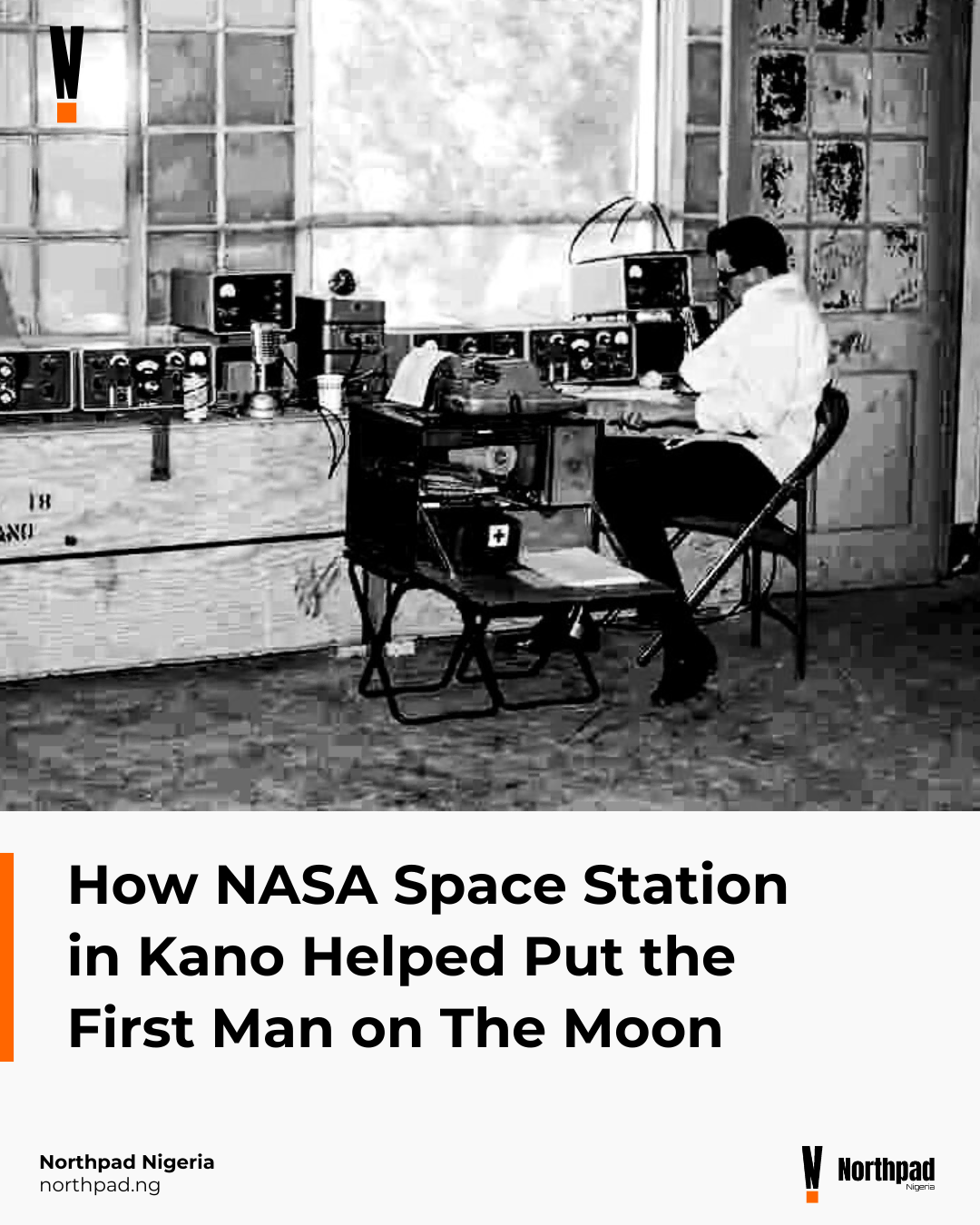Did you know that a NASA space station in Kano state in Nigeria was crucial to the success of the Apollo mission, the first mission which landed a human on the moon? Let me tell you how it happened.
How NASA Space Station in Kano Helped the Apollo Mission
In 1958 at the dawn of the Space Race, the USA launched its first human spaceflight program, Project Mercury. The program’s purpose was to launch a man into orbit and safely return him to Earth before the Soviet Union.
Project Mercury’s accomplishments paved the way for Project Gemini and then Project Apollo, which landed a man on the moon.
Project Mercury and Project Gemini were instrumental in getting a man on the moon. The National Aeronautics and Space Administration (NASA) established various stations worldwide to control and coordinate all activities for Project Mercury and later Project Gemini. In Kano, Nigeria, one of these stations was constructed. As it was known, NASA’s Tracking Station 5 was essential in laying the foundation for putting a man on the moon.
Project Mercury
The United States launched Project Mercury in 1958 and completed it in 1963. It was the first man-in-space program in the United States. The program’s goals, which included six manned flights from 1961 to 1963, were clear: orbit a manned spacecraft around Earth.
Project Mercury existed before the internet. The space race necessitated the development of the world’s first global communication network, which would allow space stations, spacecraft, and astronauts to communicate with one another.
According to NASA historical archives, the Mercury communications network included 102,000 miles of teletype lines, 60,000 miles of telephone, and 15,000 miles of high-speed data lines. This resulted in the establishment of the world’s first global communications network.
This network was primarily made up of NASA ground stations, such as the one in Kano. NASA outfitted the stations with “telemetry, tracking, and computation functions,” as well as “flight control and monitoring” and “multi-frequency air-to-ground reception and remoting provision.” Using an intercom system, several people could converse while others listened.
The outcomes of this extensive communication between Earth and space and between stations such as the NASA station in Kano eventually led to the moon landing. This global network continued to serve subsequent space programs until it was replaced in the 1980s by the satellite relay system.
Project Apollo and Kano
Launching a spacecraft into low-Earth orbit required ground controls and tracking stations in countries along Earth’s orbital path. NASA built 18 stations in strategic locations worldwide, including Kano, Nigeria.
The Kano station, among others, played an important role in tracking and controlling such spacecraft during Project Mercury, which launched such spacecraft into low earth orbit. This is because the spacecraft is only visible from a small portion of the Earth’s surface at a time, and the satellites move quickly overhead.
These stations were responsible for flight control and communication functions such as telemetry reception and documentation, tracking, commanding, and voice communications with the spacecraft.
Throughout the project, the United States processed over 1,000 tons of cargo through specially designated US depots that coordinated shipments to Nigeria and other stations worldwide. These were mostly communication and electronic equipment, as well as tracking devices.
Who Worked in the NASA Kano Space Station?
According to NASA historical records, NASA contracted with US and British engineers as well as local specialists and builders in Kano to survey the land to establish the most precise angles for radar antennae used to communicate with spacecraft as they passed above and below the horizon line. Electronic equipment, cooling towers, water chillers, hydropneumatic tanks, and diesel generators for backup power were all housed in stations.
Following the success of Project Mercury, Project Gemini was launched to develop deep space travel techniques to support the Apollo mission to land astronauts on the moon. Project Gemini used the same ground stations, including NASA Tracking Station 5 in Kano. This demonstrates how important the Kano station was in putting a man on the moon.
Neil Armstrong became the first person to set foot on the moon’s surface on July 21, 1969. “One small step for man, one giant leap for mankind,” he described the event. It was a huge step forward for humanity, and it was the first of five missions that landed astronauts on the moon as part of Project Apollo. The successes of Project Mercury and Project Gemini, which enabled NASA to develop advanced spaceflight techniques, made it possible for Project Apollo to succeed.
It also would not have been possible without the incredible work of NASA’s ground stations worldwide, such as NASA Tracking Station 5 in Kano, Nigeria.
Conclusion
The Kano station was decommissioned in December 1966, following the completion of Project Gemini. The NASA space station in Kano was instrumental in Projects Mercury, Gemini, and, eventually, Apollo, which put a man on the moon.
The NASA Kano station aided in providing critical communication and tracking functions, which resulted in significant advancements in spaceflight techniques and technology. Nigeria would later launch its space program in 2003, with plans to send an astronaut into space by 2030.
If you enjoyed reading this article and want more facts about Northern Nigeria, check out 100 Facts You Should Know About Northern Nigeria.










0 Comments
Trackbacks/Pingbacks